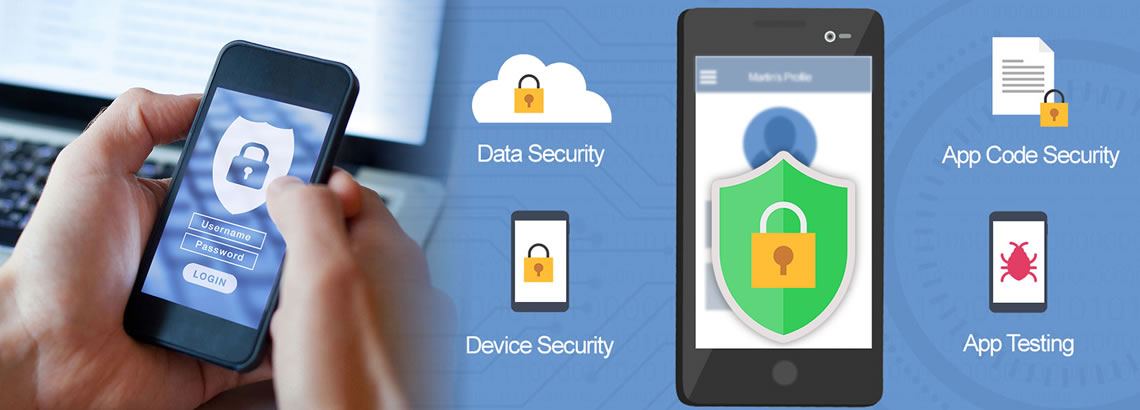In a digital world, hackers have become a big threat and obviously to mobile app security as they are active in existing networks. A recent study estimates that 1 out of 36 mobile phones have got an app facing a high risk threat. Data analysed has pointed out that over 71% of fraudulent transactions have been detected from mobile apps, when compared to web applications.
Consider threats and vulnerabilities seriously.
Mobile developers have to consider these aspects in security so as to avert threats to the users’ personal information and data. They need to be cautious to include the security protocols as required when building the app, to face the increasing threats of hackers and vulnerabilities.
About Mobile App security.
Mobile app security means securing the mobile application from external threat such as hackers or fraudsters, spyware, malware or phishing and other digital breaches, or vulnerabilities, affecting personal and financial information of app users and owners.
Statistics reveal that over 13 million devices have been affected by malware because of an app’s weakness and unwillingness of those app owners not keen in securing the app for its users. A vulnerable app can result in damaging the brand image of the product or company.
Be specific in your app idea.
Set the top priorities and focus on growth before to set out to build upon your app idea. Give clear instructions to developers on how to reach your goals and targets, whatever type of platform or framework you may adopt for your mobile application.
Security Loopholes.
A well-planned approach to functionality, working on a seamless interface, is what is expected of mobile apps by end-users. So, to prevent security threats found on the servers and networks, anti-virus applications have been designed and used. All these facts have to be considered while building the app on a chosen platform to plug security lapses.
App security threat deterrence.
Authentication checks. Many developers use the same password for many apps. If such a password is hacked, it could be a big threat to overall security. So multi-factor authentication becomes necessary, such as, bio-metric scan, SMS code or even a security question for permitting access.
Proper encryption: Due to lack of proper encryption of the code, the data and information can be tracked, which has to be tackled with proper encryption to avoid code theft, ID theft, privacy violations and other vulnerabilities. Hackers will be able to use malware, access the data and create problems.
Prevent Reverse Engineering: The threat of reverse engineering is it exposes the app to hackers. A convincing fake app which is a replica of another authentic app is developed with malicious intent of infecting malware, generating revenue and pilfering information. Reverse engineering will reveal the metadata provided in code meant for debugging, but can help the hacker find how the app functions at back-end, then expose the encryption and the source code and maybe more. Obfuscate the code to present reverse engineering.
Malicious Code injection: User generated content can be a potential threat, such as, forms and comments filled in by the user. For example, a hacker can input lines of JavaScript into a login form and then get access to private information surreptitiously.
Data Storage Vulnerabilities. Another threat is insecure data storage of apps and devices. Many applications can store data in the form of cookies in the SQL database, which is not secure as a cunning hacker can access it secretly. Proper procedures must be laid by developers to handle the app’s cache which holds the data, images and other information.
As the popularity of mobile apps keeps growing globally, it is also becoming increasingly the target of hackers and cyber criminals. Mobile app security is surely of great importance in the days to come. To know more about how we can serve you please go over our site (www.mobileappoutsourcing.com), or leave us an enquiry. Our team will get in touch with you as soon as possible.




